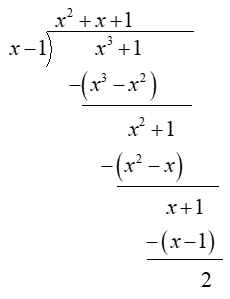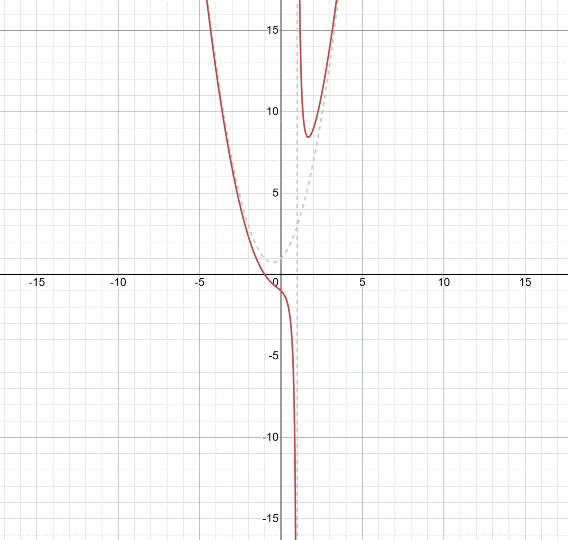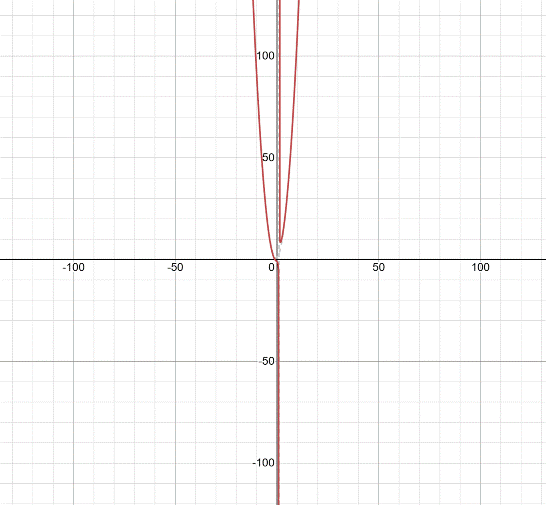
The end behaviour asymptotes of function f and graph it in two window a) One showing around vertical asymptote(s). b) One showing a graph of f that resembles the end behaviour asymptote.
The end behaviour asymptotes of
Given:
The function is
Concept Used:
The x -intercept is given by zeros of numerator that are not zero of denominator. And y -intercept is given by
And,
If a polynomial function in the form
And,
The end behaviour asymptote given by
The condition can be concluded as,
1) If
2) If
3) If
Calculation:
Consider the function,
Find vertical asymptotes, so find the zeros of denominator,
Since, the zero of denominator is vertical asymptotes, so vertical asymptote is
Therefore,
To find end behaviour asymptotes, find
Since,

Thus,
Or,
Hence, the end behaviour asymptotes is,
Now, graph the end behaviour asymptote together with f in two window, a) One showing around vertical asymptote and b) One showing a graph of f that resembles the end behaviour asymptote.
a) The graph of f with end behaviour asymptote,

And, b) The graph of f that resembles the end behaviour asymptote is as follows,

Clearly, the graph of f resembles the end behaviour asymptote.
Conclusion:
The end behaviour asymptotes of
Chapter 2 Solutions
PRECALCULUS:GRAPHICAL,...-NASTA ED.
 Calculus: Early TranscendentalsCalculusISBN:9781285741550Author:James StewartPublisher:Cengage Learning
Calculus: Early TranscendentalsCalculusISBN:9781285741550Author:James StewartPublisher:Cengage Learning Thomas' Calculus (14th Edition)CalculusISBN:9780134438986Author:Joel R. Hass, Christopher E. Heil, Maurice D. WeirPublisher:PEARSON
Thomas' Calculus (14th Edition)CalculusISBN:9780134438986Author:Joel R. Hass, Christopher E. Heil, Maurice D. WeirPublisher:PEARSON Calculus: Early Transcendentals (3rd Edition)CalculusISBN:9780134763644Author:William L. Briggs, Lyle Cochran, Bernard Gillett, Eric SchulzPublisher:PEARSON
Calculus: Early Transcendentals (3rd Edition)CalculusISBN:9780134763644Author:William L. Briggs, Lyle Cochran, Bernard Gillett, Eric SchulzPublisher:PEARSON Calculus: Early TranscendentalsCalculusISBN:9781319050740Author:Jon Rogawski, Colin Adams, Robert FranzosaPublisher:W. H. Freeman
Calculus: Early TranscendentalsCalculusISBN:9781319050740Author:Jon Rogawski, Colin Adams, Robert FranzosaPublisher:W. H. Freeman
 Calculus: Early Transcendental FunctionsCalculusISBN:9781337552516Author:Ron Larson, Bruce H. EdwardsPublisher:Cengage Learning
Calculus: Early Transcendental FunctionsCalculusISBN:9781337552516Author:Ron Larson, Bruce H. EdwardsPublisher:Cengage Learning





